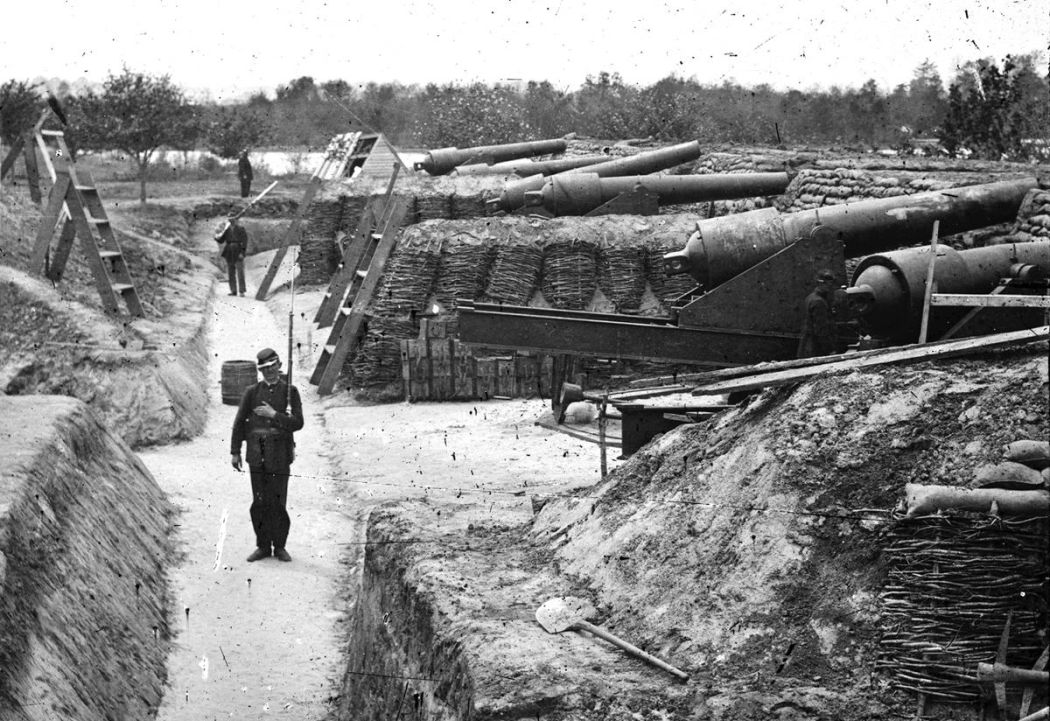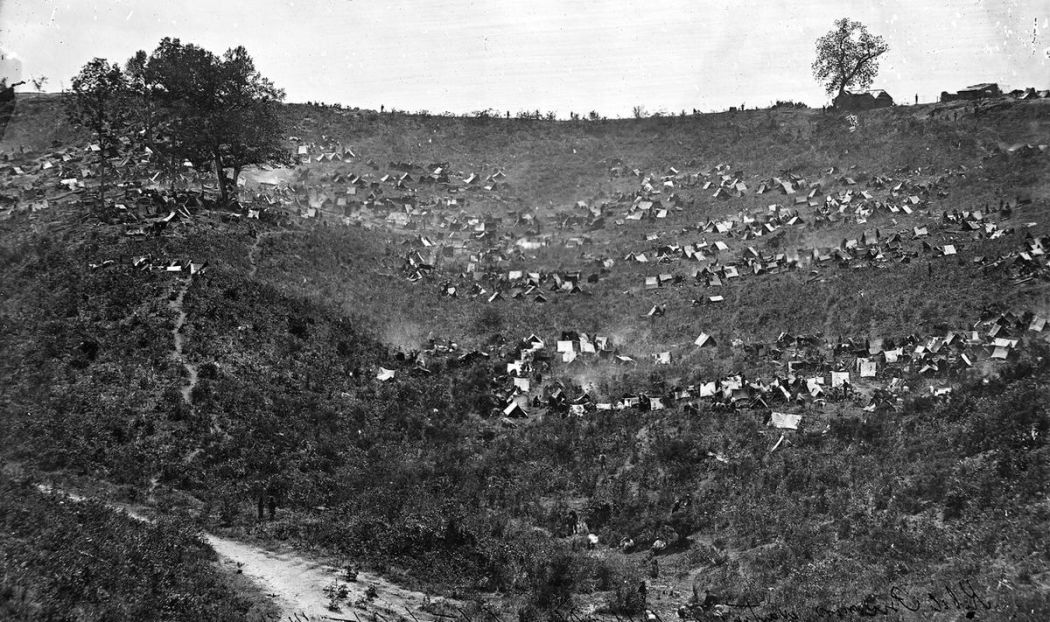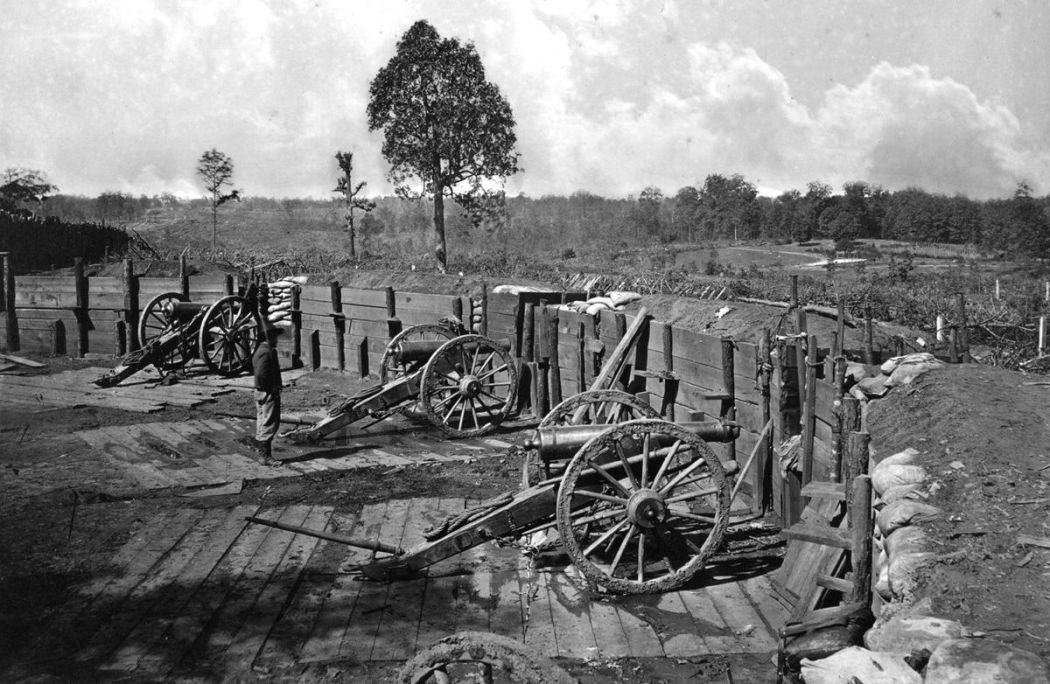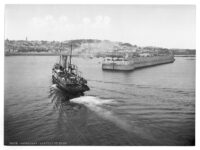Here is a collection of photographs covering the places of the Civil War: the battleships, prisons, hospitals, urban centers, and rural pastures where history was made.
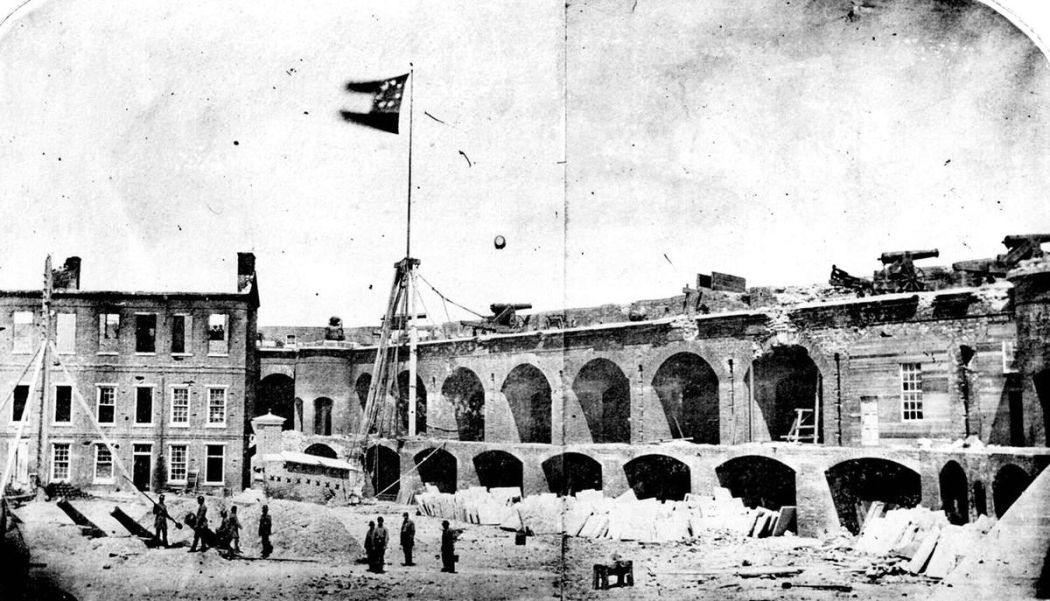
Fort Sumter, South Carolina, April, 1861, under the Confederate flag. The first shots of the Civil War took place here, on April 12, 1861, as Confederate batteries opened fire on the Union fort, bombarding it for 34 straight hours. On April 13, Union forces surrendered and evacuated the fort. Union forces made many attempts to retake the fort throughout the war, but only took possession on February 22, 1865, after Confederate forces had evacuated Charleston. # NARA
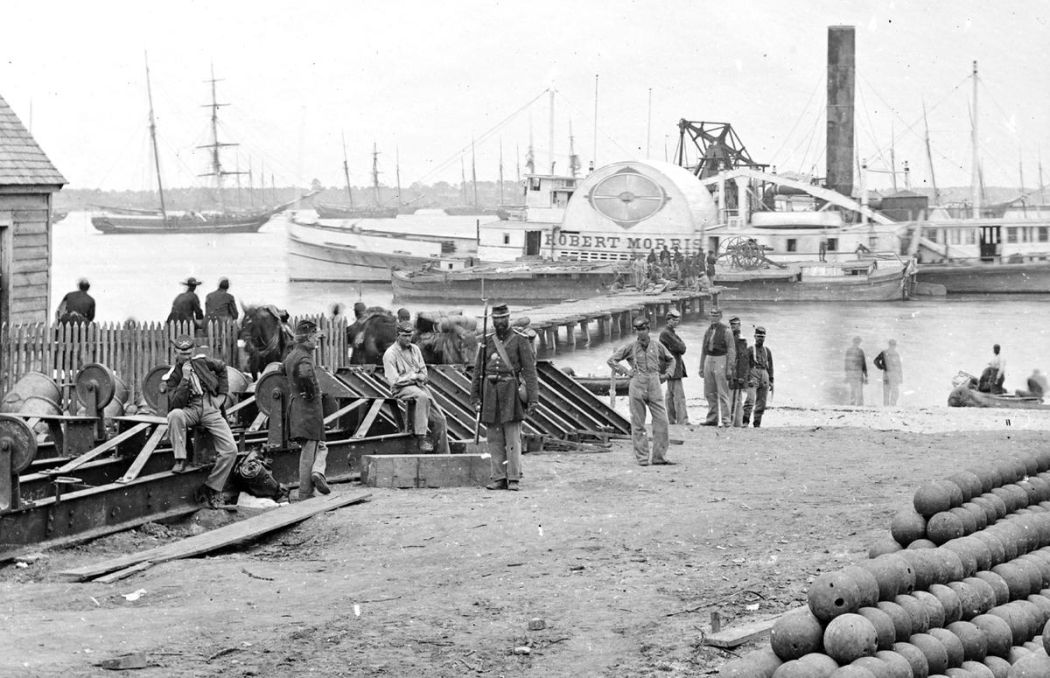
Yorktown, Virginia, Embarkation for White House Landing, Virginia, Photograph from the main eastern theater of war, the Peninsular Campaign, May-August 1862. # LOC

A captured Confederate encampment near Petersburg, Virginia, in June of 1864. # Timothy H. O’Sullivan/LOC
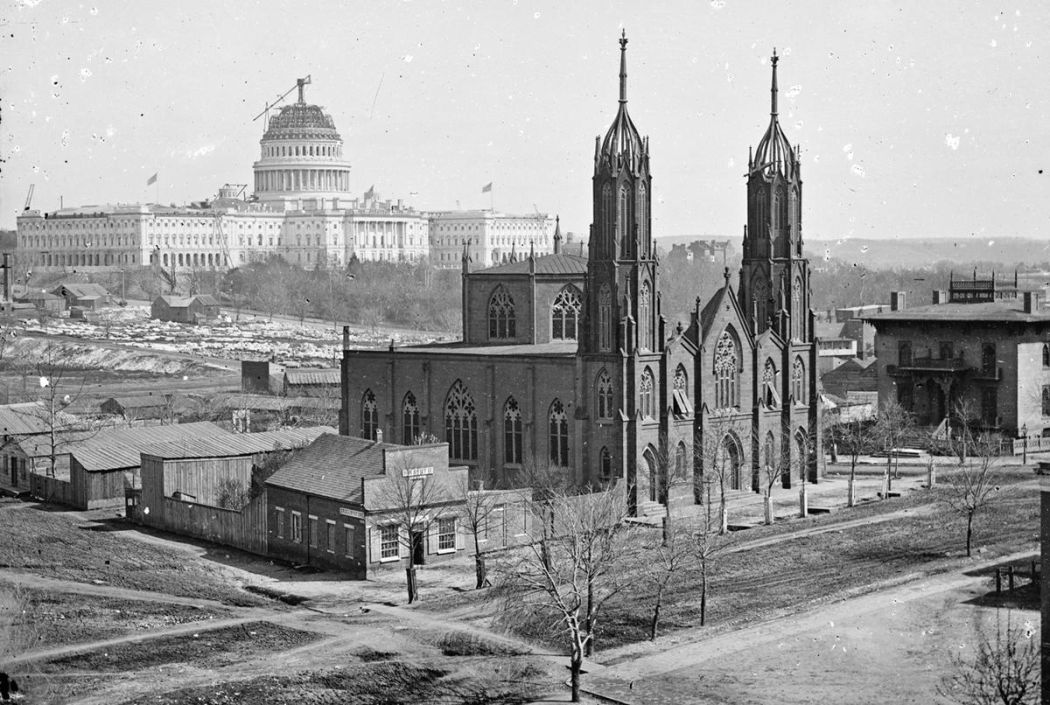
A view of Washington, District of Columbia, from the intersection of 3rd and Indiana Avenue, ca. 1863. In the foreground is Trinity Episcopal Church, in the background, the unfinished Capitol building. Construction on the capitol was briefly suspended early in the war, but continued through the later years. # LOC
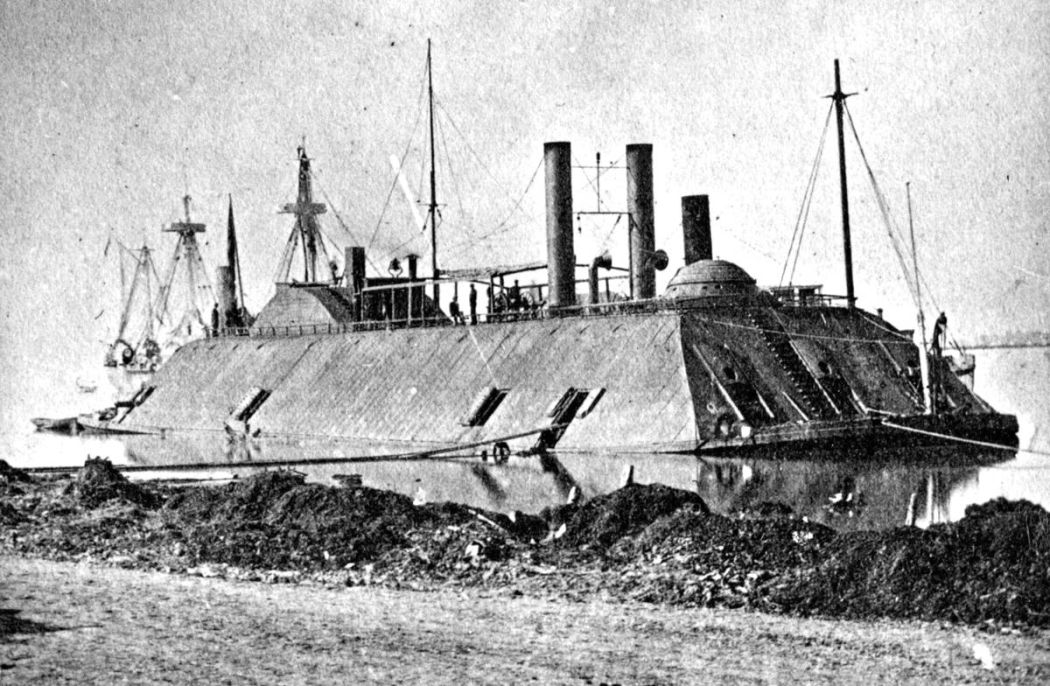
A March, 1863 photo of the USS Essex. The 1000-ton ironclad river gunboat, originally a steam-powered ferry, was acquired during the American Civil War by the US Army in 1861 for the Western Gunboat Flotilla. She was transferred to the US Navy in 1862 and participated in several operations on the Mississippi River, including the capture of Baton Rouge and Port Hudson in 1863. # LOC
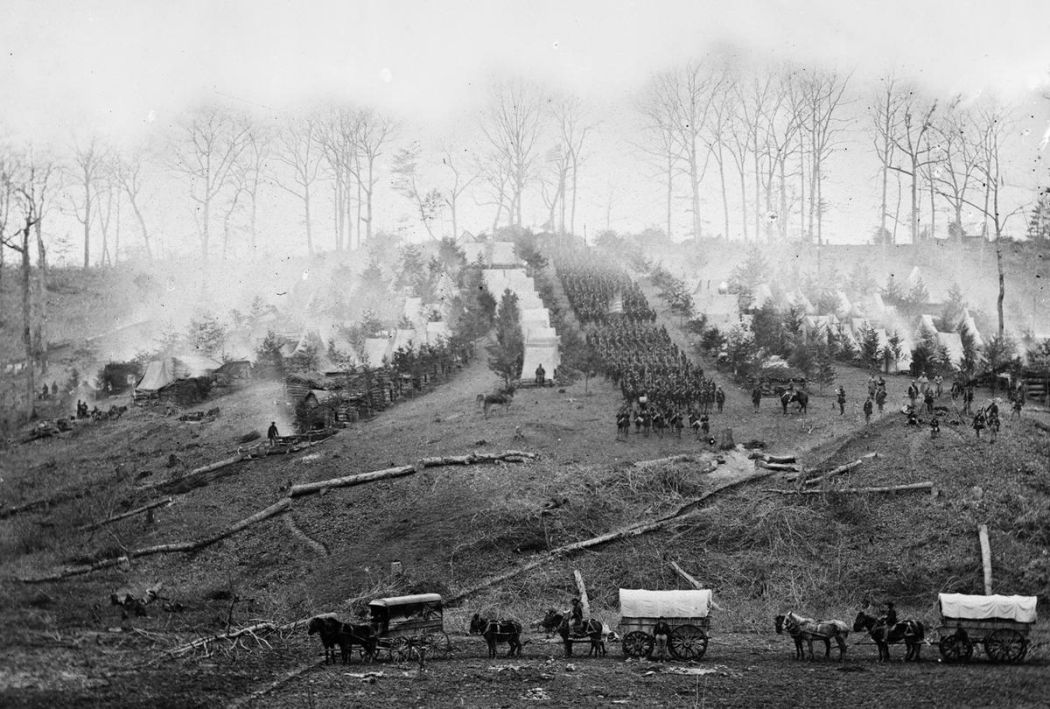
The 150th Pennsylvania Infantry camp on Belle Plain, Virginia, is pictured in March 1862, three weeks before the Battle of Chancellorsville. # AP Photo/Library of Congress
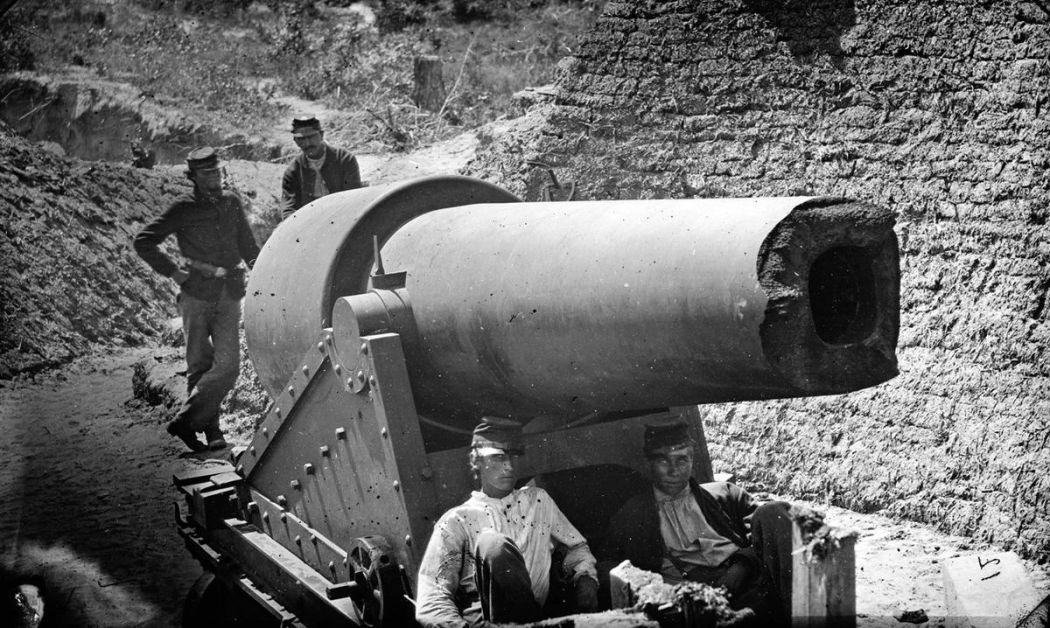
Morris Island, South Carolina. The shattered muzzle of a 300-pounder Parrott Rifle after it had burst, photographed in July or August of 1863. # Haas & Peale/LOC
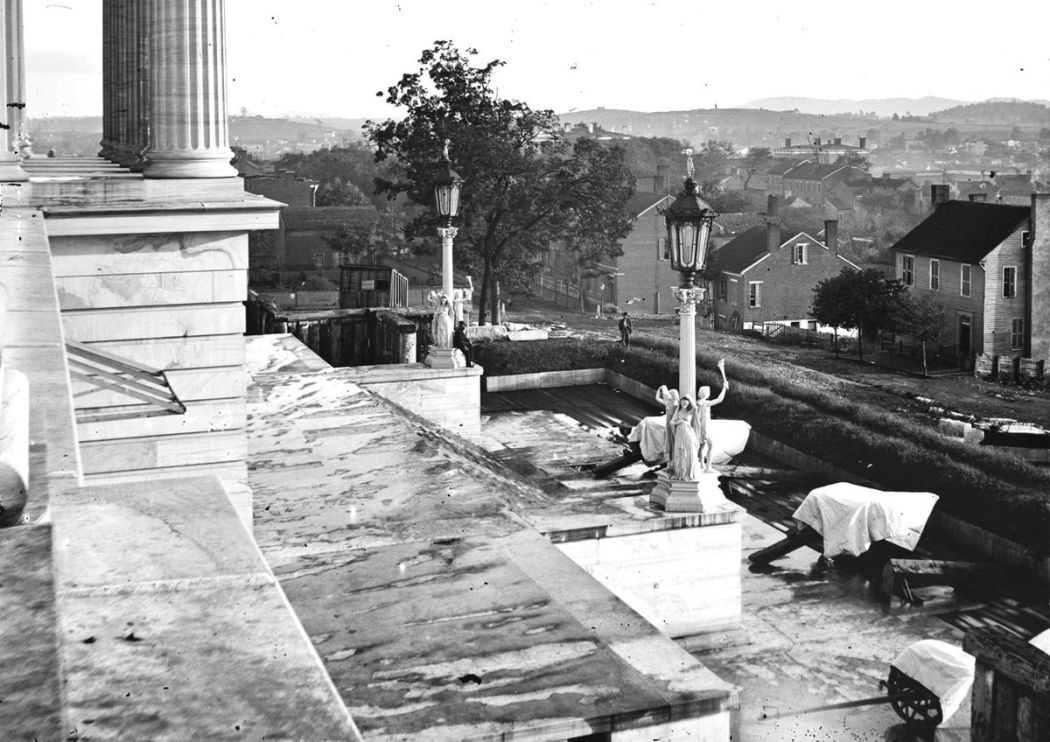
On the steps of the Tennessee State Capitol building in Nashville, Tennessee, with covered guns (lower right) set up nearby, in 1864. # George N. Barnard/LOC
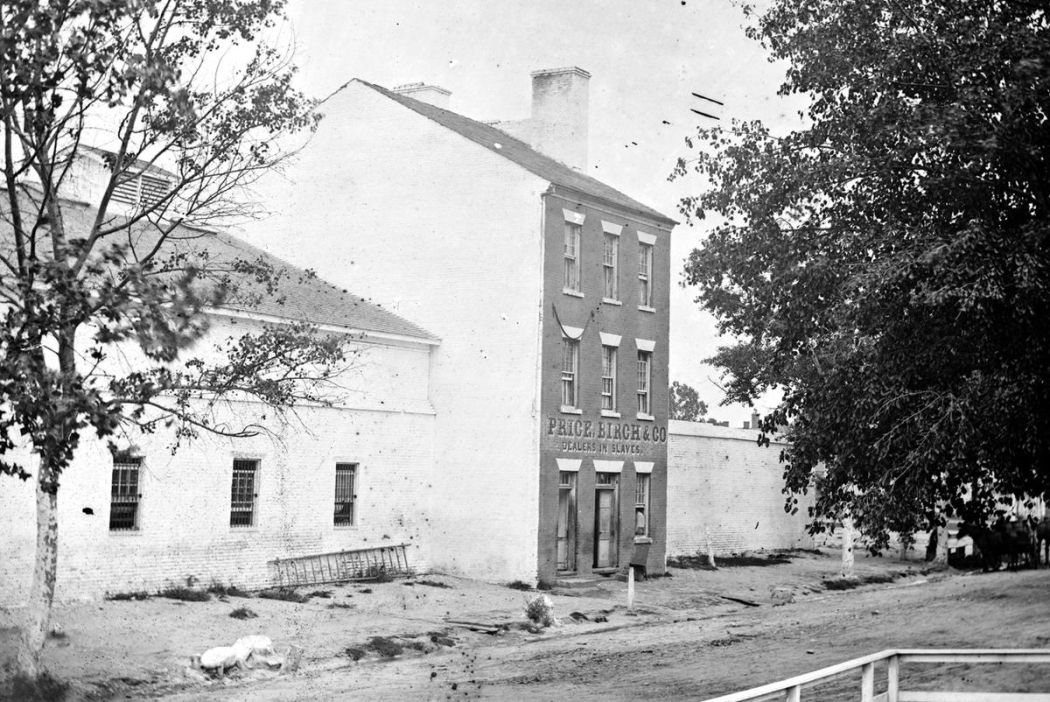
A scene in Alexandria, Virginia, in August of 1863. The storefront of 283 Duke St. reads “Price, Birch & Co., dealers in slaves” # LOC
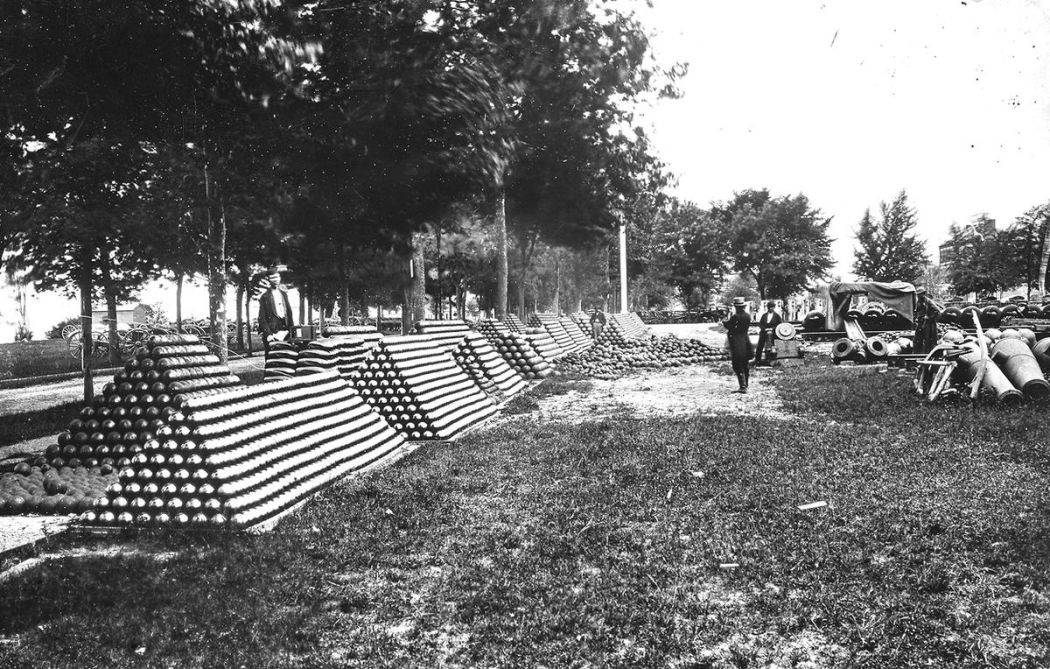
Stacked cannon balls, possibly a view of an arsenal yard in Washington, District of Columbia, # NARA
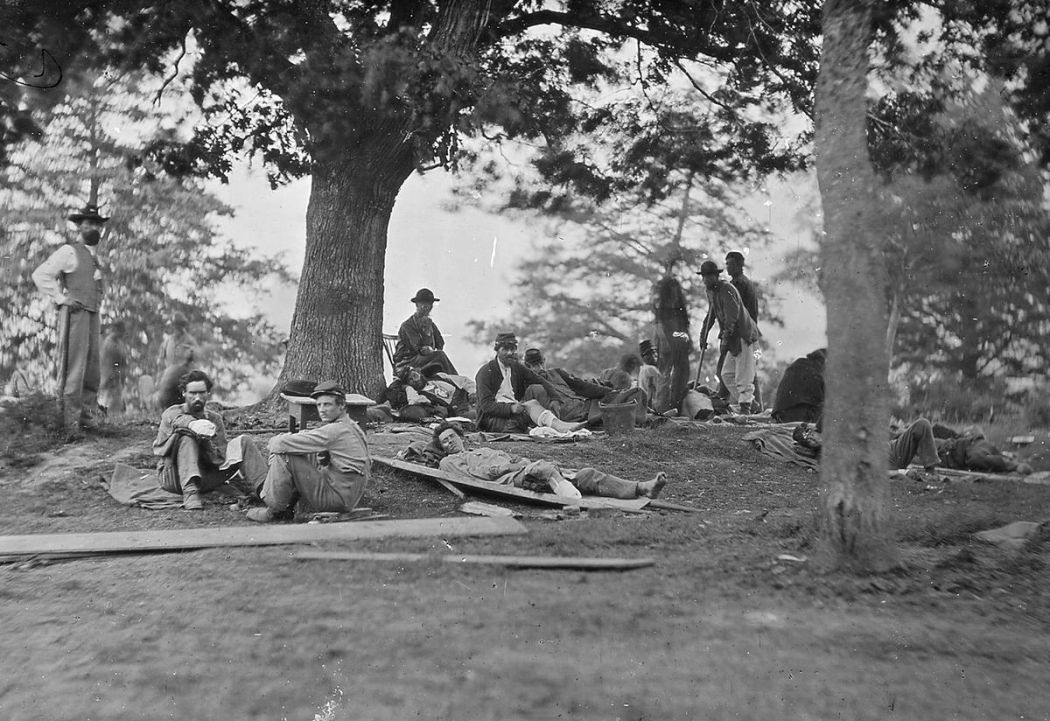
Wounded soldiers at rest near Marye’s Heights, Fredericksburg, Virginia. After the battle of Spotsylvania, in 1864. # Mathew Brady/NARA
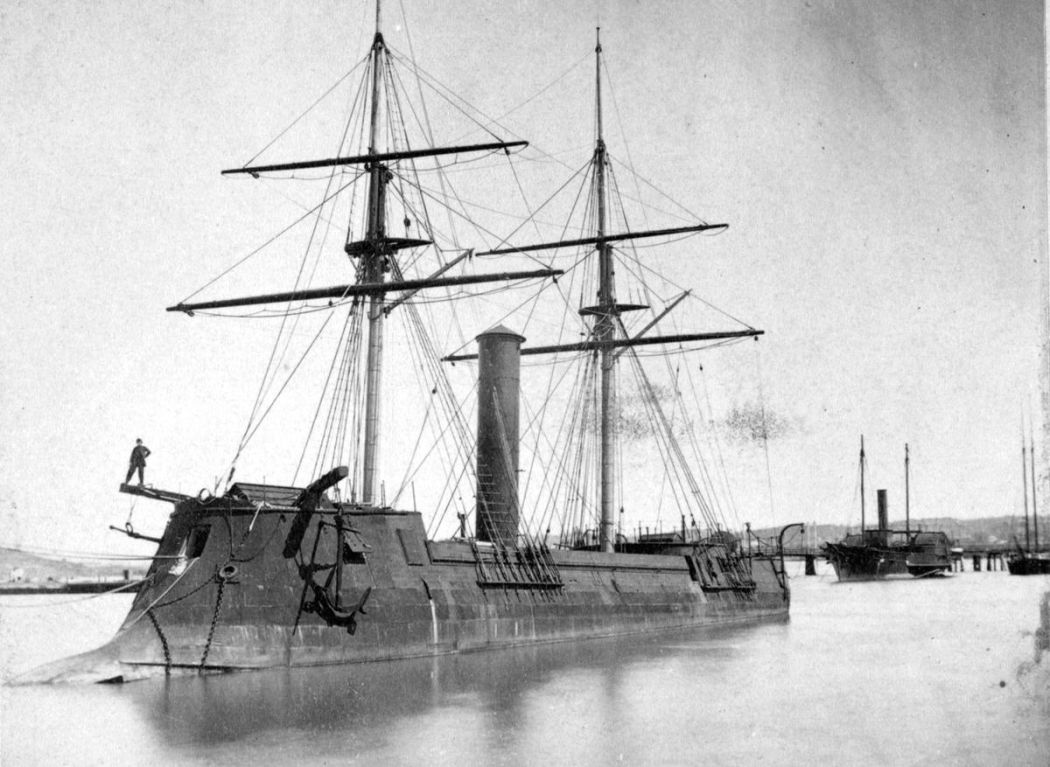
The CSS Stonewall was a 1,390-ton ironclad built in Bordeaux, France, for the Confederate Navy in 1864. After she crossed the Atlantic, reaching Havana, Cuba, it was already May, 1865, and the war had ended. Spanish Authorities took possession, soon handing it over to the U.S. government. # Bell & Bro. Photographers/LOC
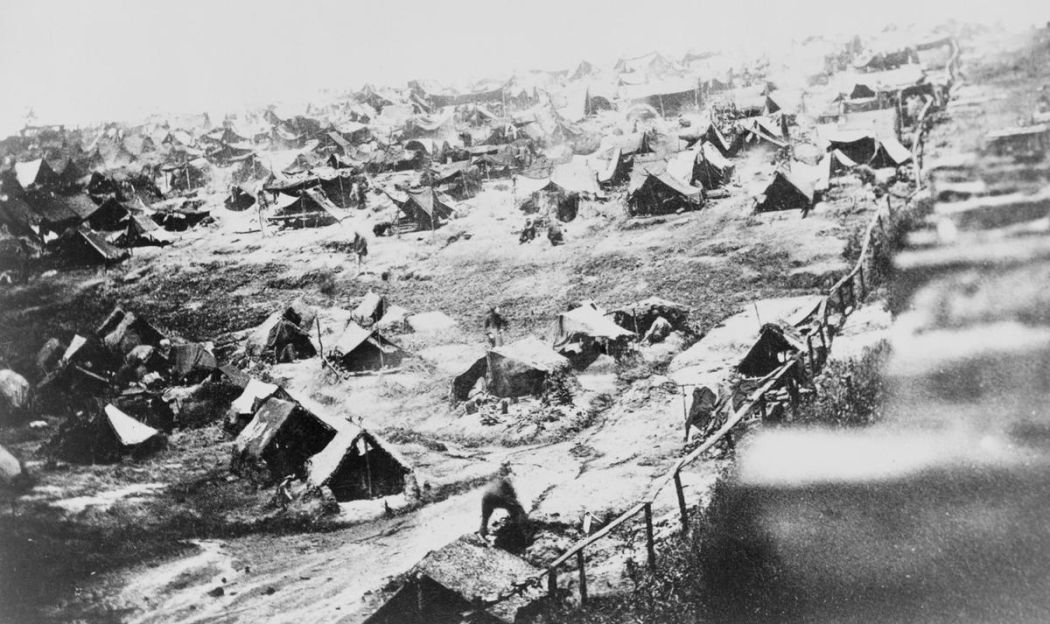
A view of Andersonville Prison, Georgia, on August 17, 1864. Andersonville was an infamous Confederate Prisoner-of-war camp, where nearly 13,000 of its approximately 45,000 Union prisoners died in brutal conditions, suffering from starvation, disease, and abuse from their captors. # LOC
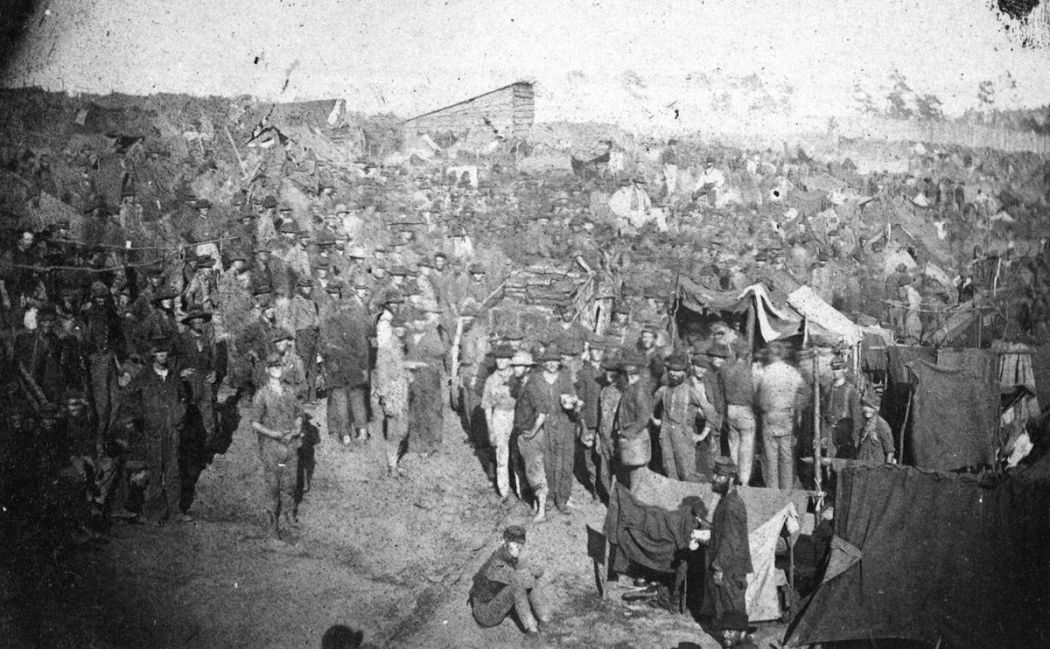
Union prisoners draw their rations in this view from main gate of Andersonville Prison, Georgia, on August 17, 1864. # NARA
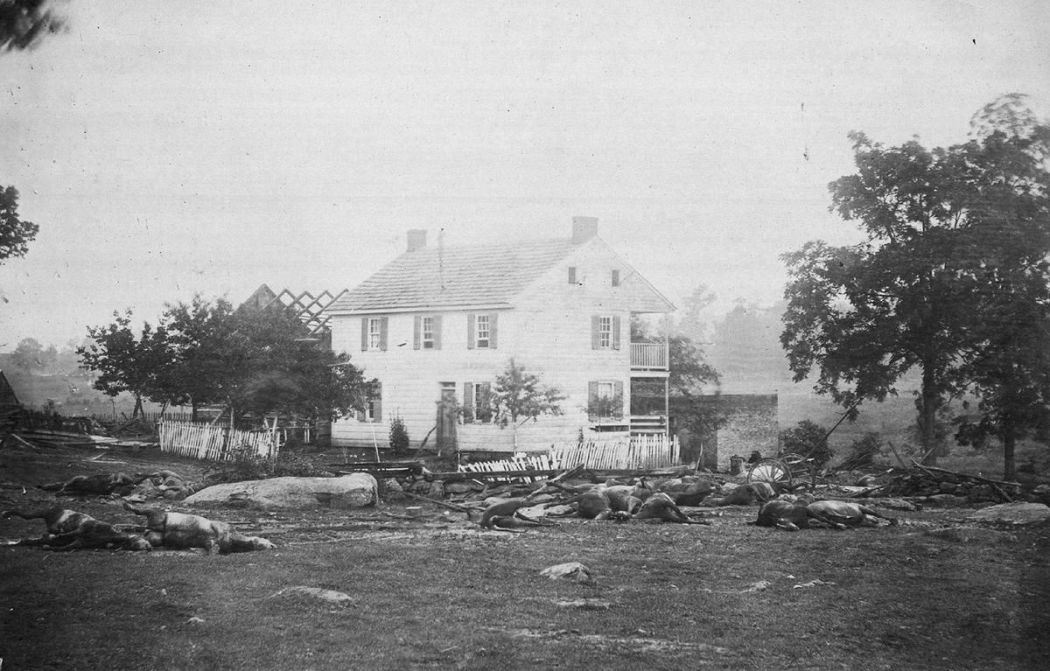
Dead horses surround the damaged Trostle House, results of the Battle of Gettysburg, in July of 1863. Union general Major General Daniel Sickles used the farmhouse as a headquarters and Union and Confederate troops fought among the farm buildings during the fierce battle. # LOC
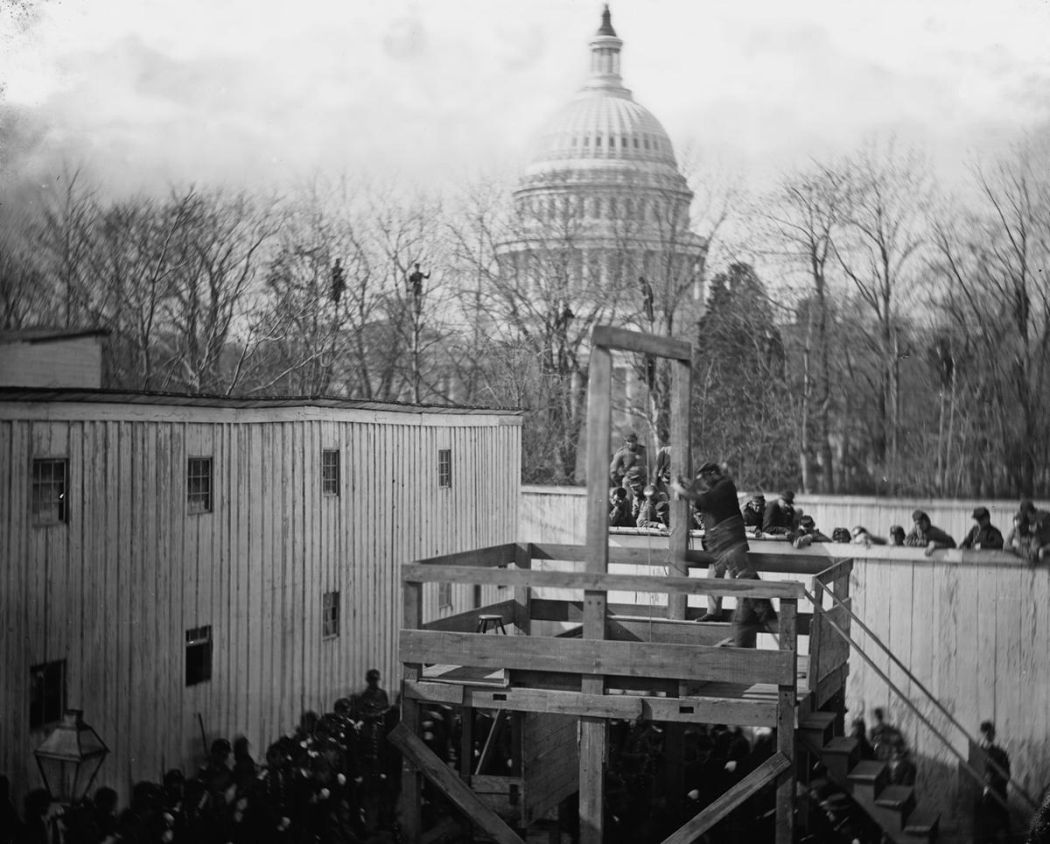
An execution in Washington, District of Columbia, on November 10, 1865. Henry Wirz, former commander of the Confederate prisoner of war camp near Andersonville, Georgia, was tried and hung after the war for conspiracy and murder related to his command of the notorious camp. # LOC
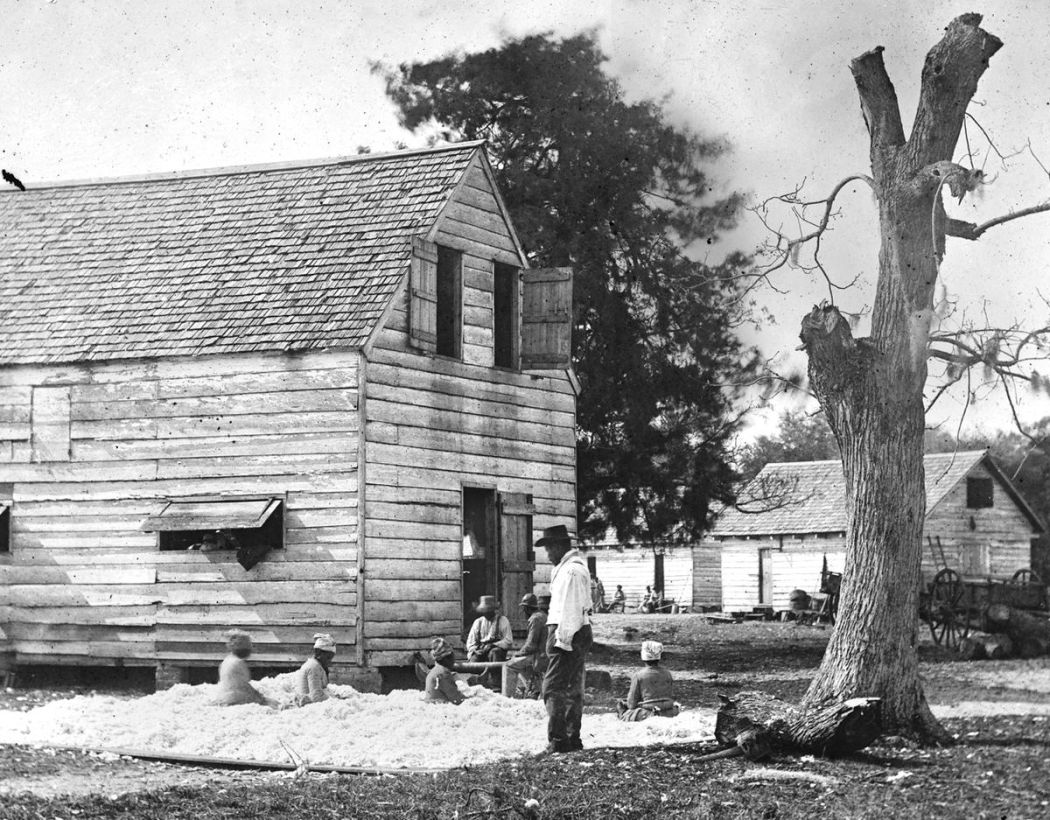
African Americans prepare cotton for a cotton gin on Smith’s plantation, Port Royal Island, South Carolina, in 1862. # AP Photo/Library of Congress/Timothy H. O’Sullivan
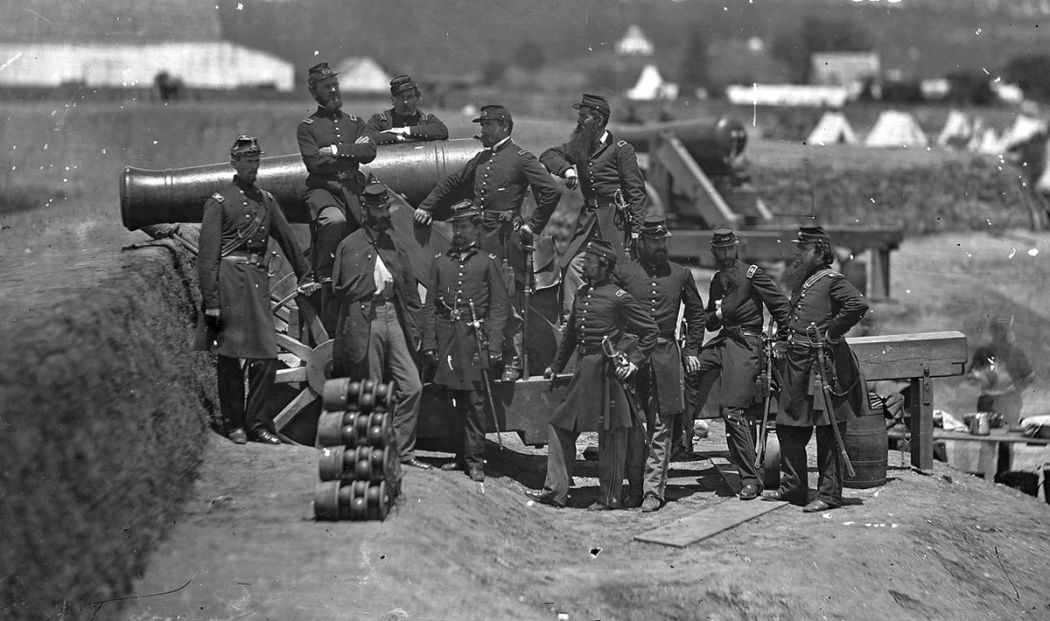
Officers of the 69th Infantry New York, at Fort Corcoran, Virginia, with Col. Michael Corcoran. # Mathew Brady/NARA

A Federal encampment on the Pamunkey River, Cumberland Landing, Virginia, in May of 1862 # Alexander Gardner/LOC
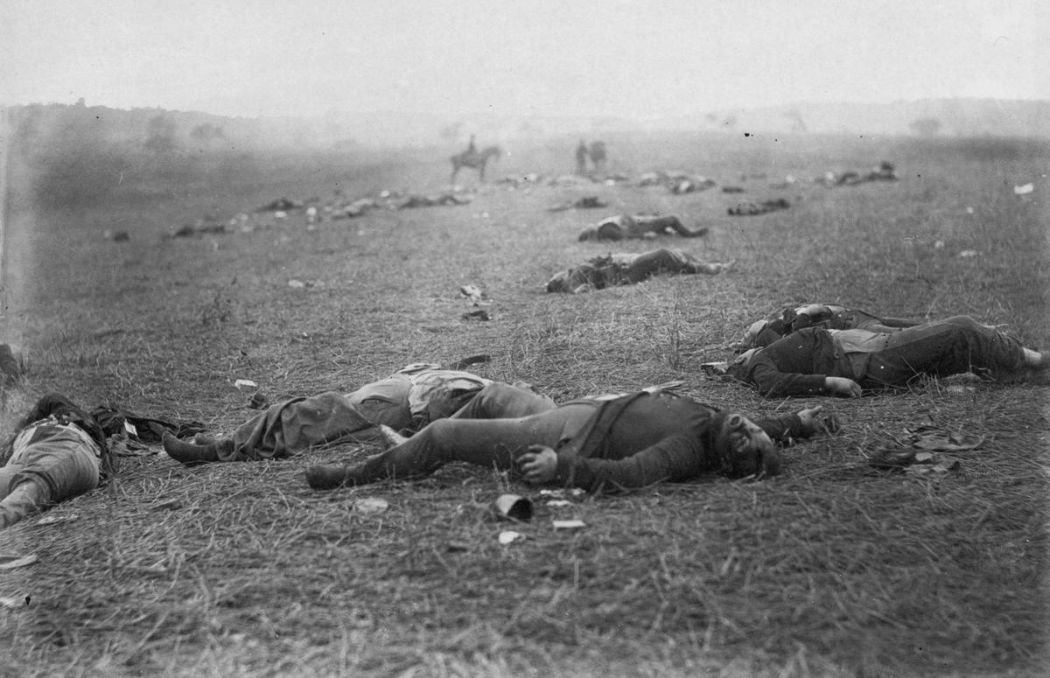
“A harvest of death”, a famous scene from the aftermath of the Battle of Gettysburg, in Pennsylvania, in July of 1863 # Timothy H. O’Sullivan/LOC
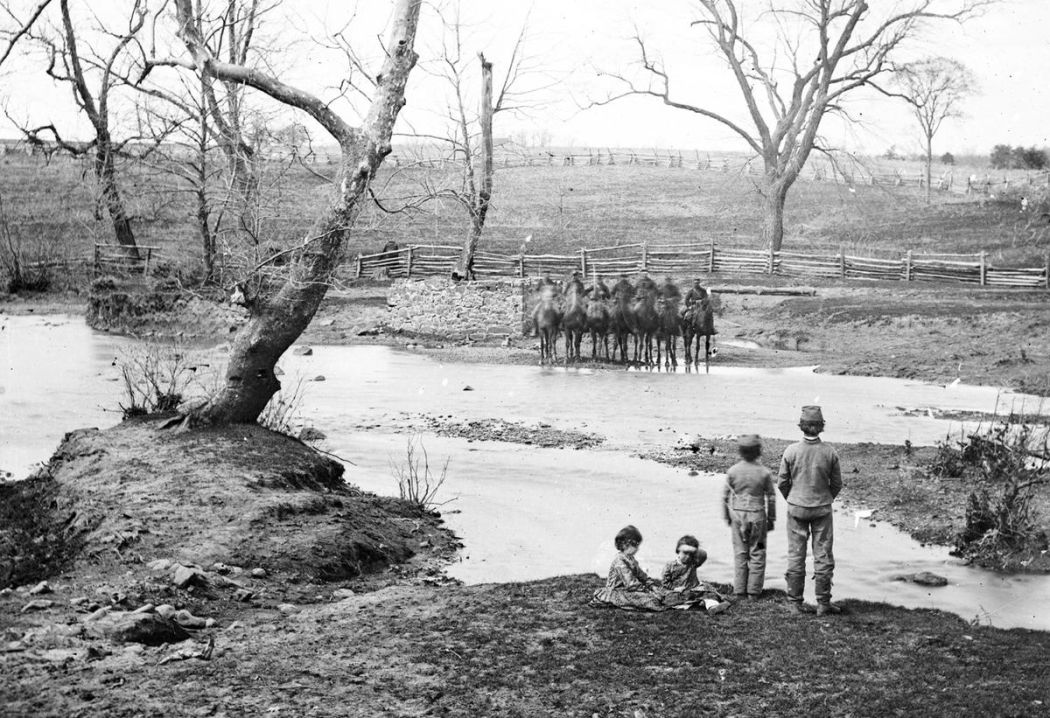
Federal cavalry at Sudley Ford, Virginia, following the battle of First Bull Run, in March of 1862. # George N. Barnard/LOC
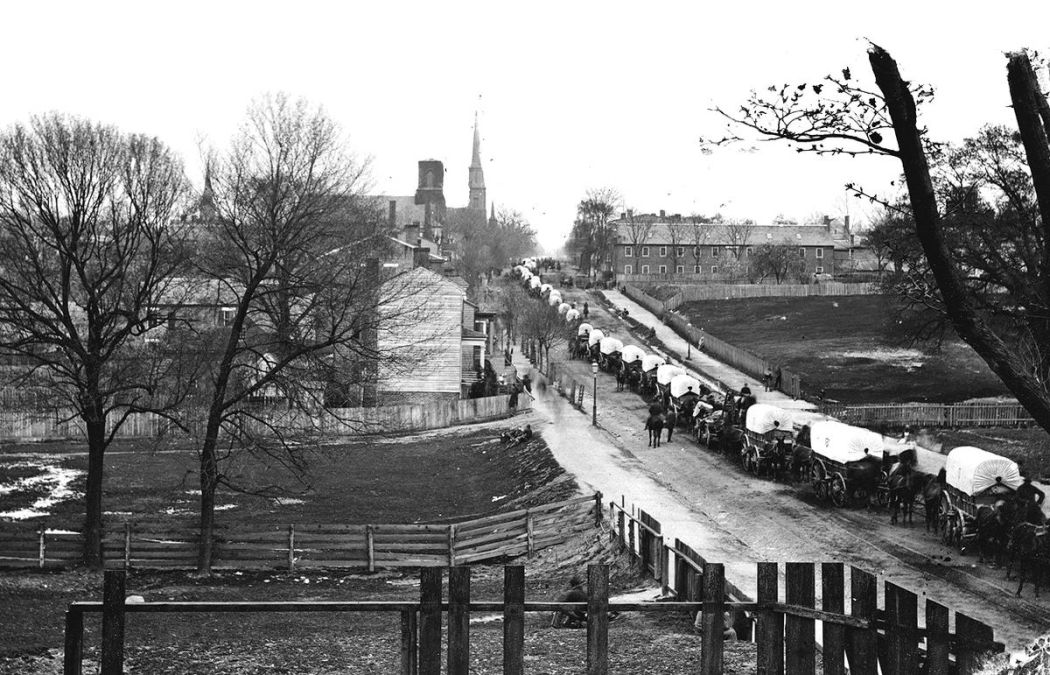
Petersburg, Virginia, the first Federal army wagon train entering the town in April of 1865. # John Reekie/LOC
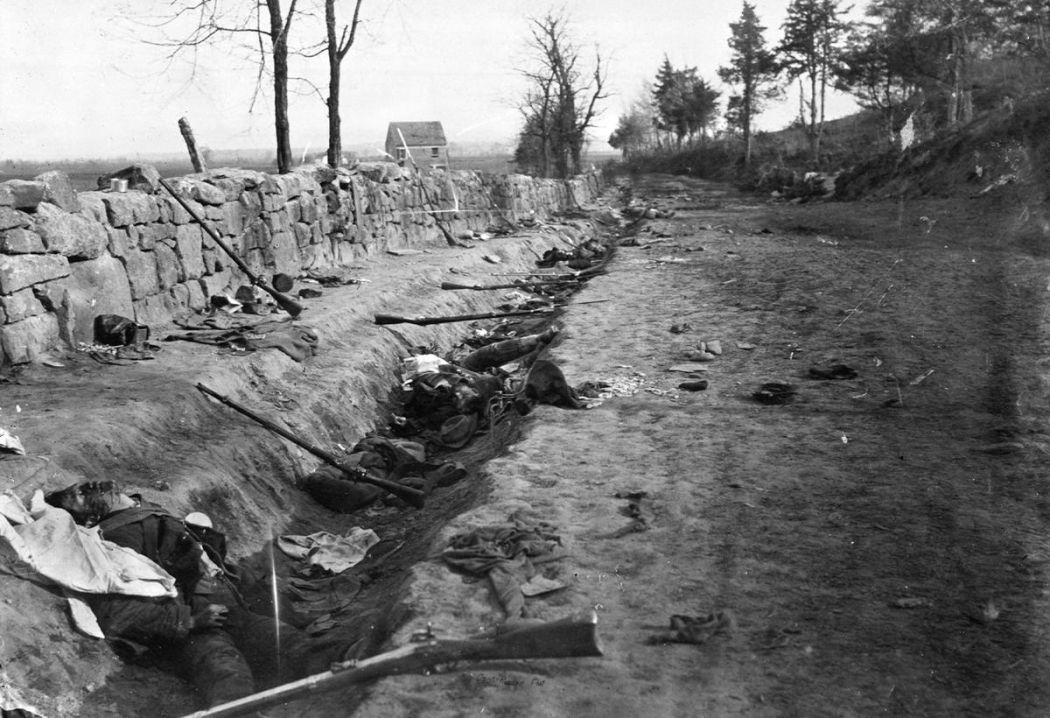
Confederate dead lie among rifles and other gear, behind a stone wall at the foot of Marye’s Heights near Fredericksburg, Virginia on May 3, 1863. Union forces penetrated the Confederate lines at this point, during the Second Battle of Fredericksburg. # Mathew Brady/NARA
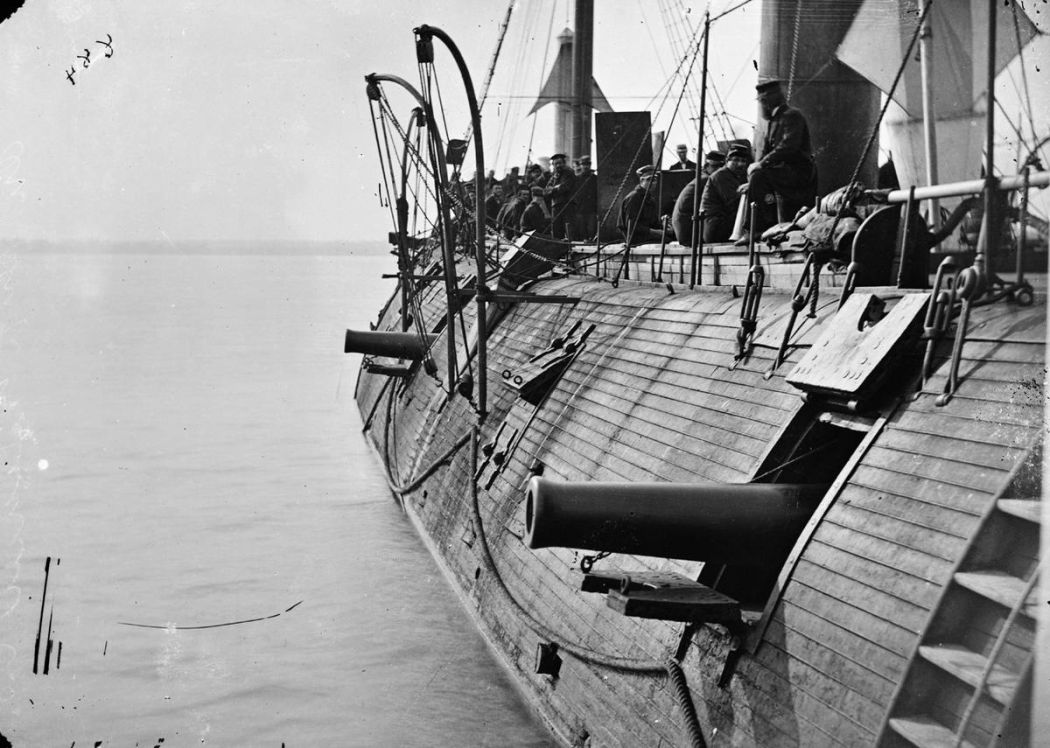
The Federal Ironclad Galena, after recent action with Confederate batteries at Drewry’s Bluff, on Virginia’s James River, ca. 1862. # James F. Gibson/LOC
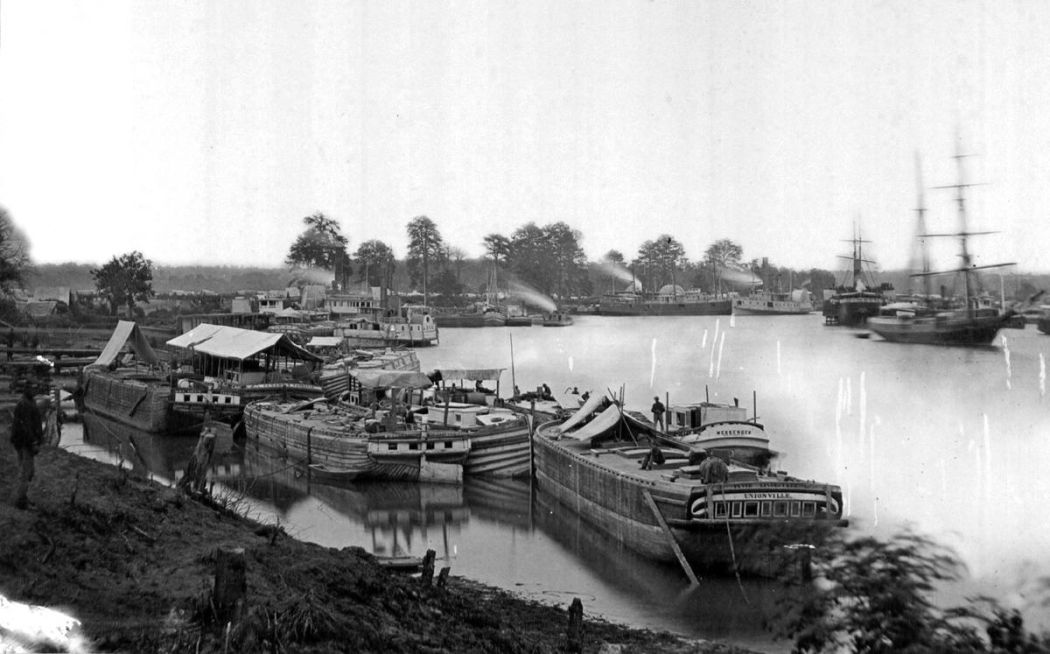
White House Landing, on the Pamunkey river, Virginia. The site was a major Union Army Supply Base in 1862 ,during the Peninsula Campaign. # LOC
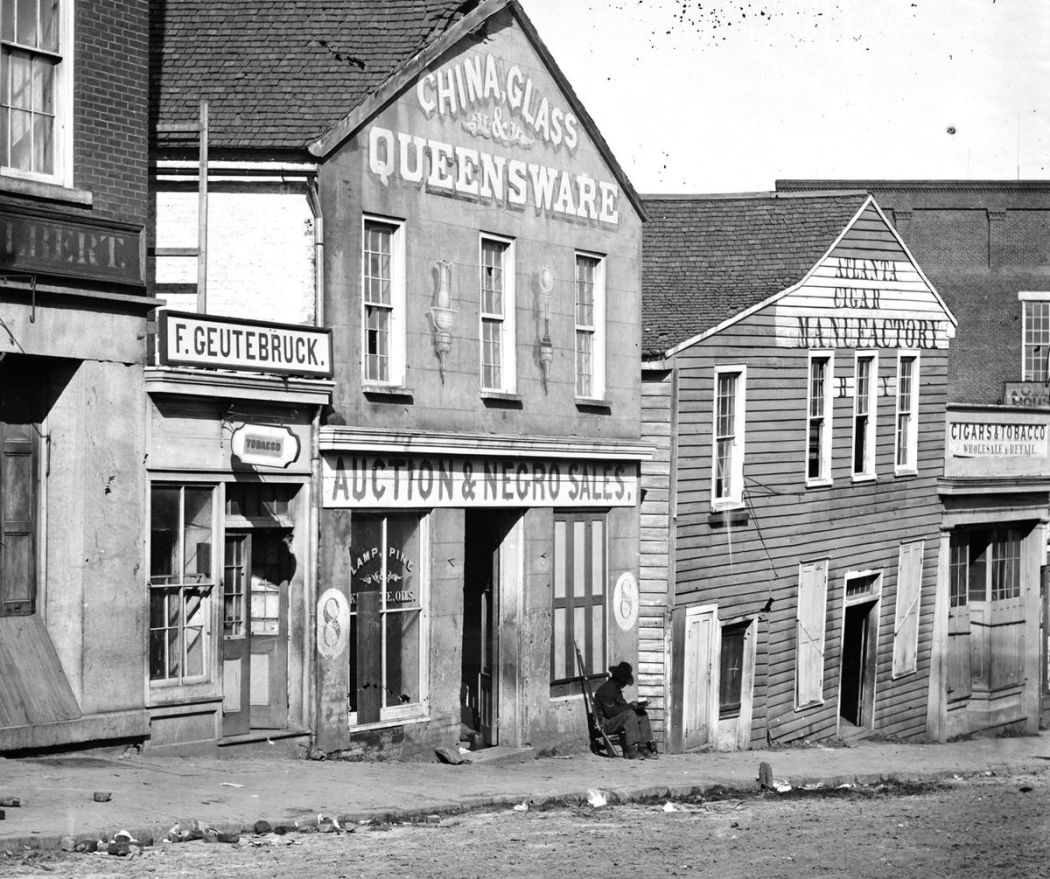
A black Union soldier sits, posted in front of a slave auction house on Whitehall Street in Atlanta, Georgia, in 1864. The sign reads “Auction & Negro Sales”. # George N. Barnard/LOC
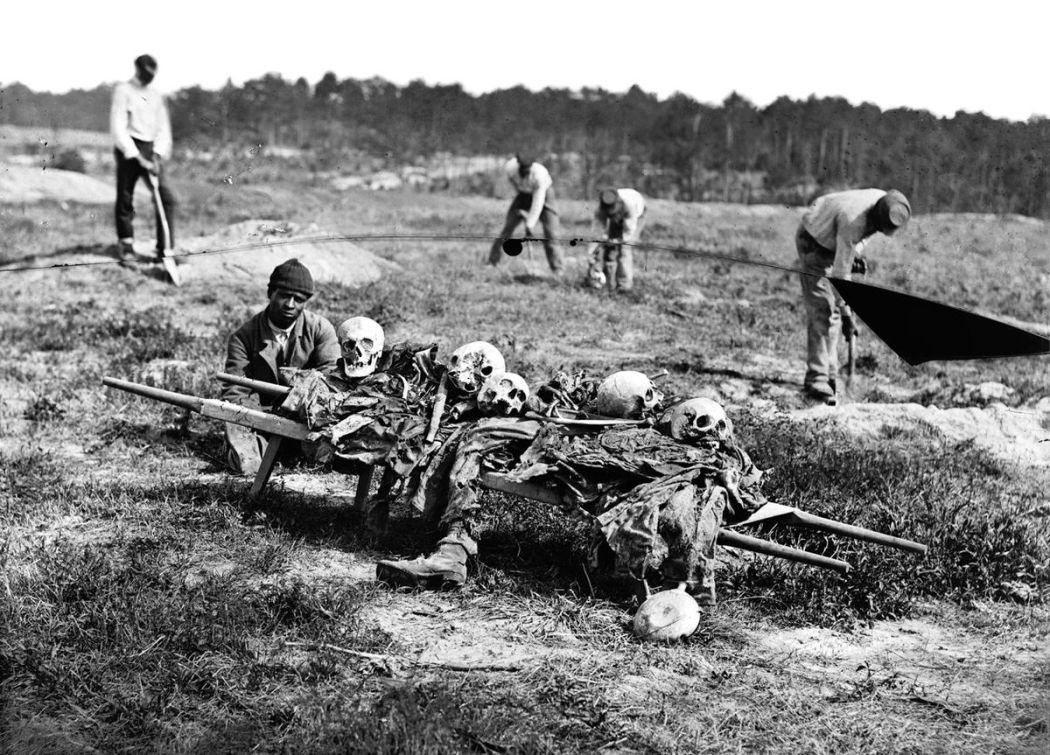
African Americans collect the remains of soldiers killed in battle near Cold Harbor, Virginia, in April of 1865. # LOC
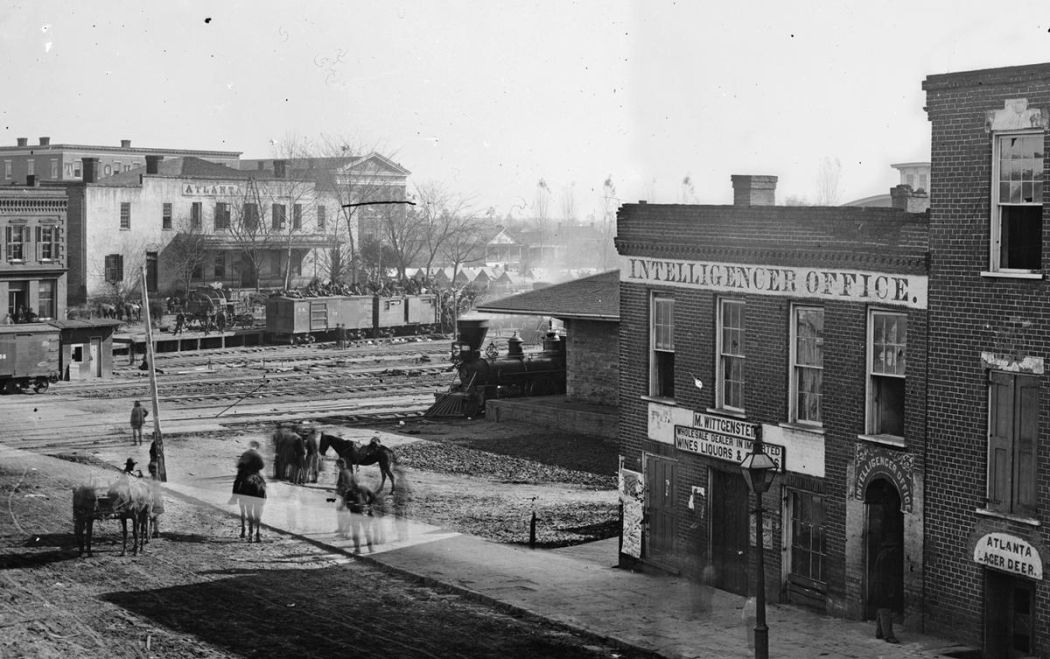
In Atlanta, Georgia, soldiers sit atop boxcars at a railroad depot. At right is the office of Atlanta’s Daily Intelligencer newspaper. Panorama made from two photographs taken by George N. Barnard in 1864. # George N. Barnard/LOC

The camp of the Tennessee Colored Battery, pictured during the Siege of Vicksburg at Johnsonville, Tennessee, in 1864. View a closeup detail of this image here. # AP Photo/Library of Congress
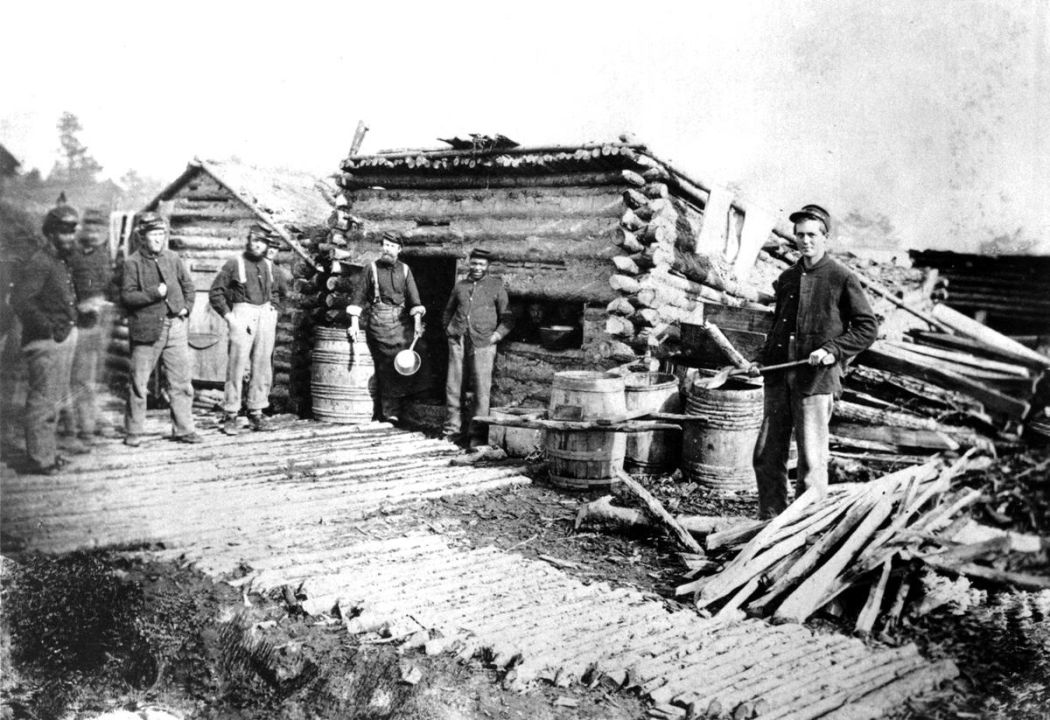
Serving as a soldier in uniform and getting regular army pay, a former slave (center, with hands in pockets) stands with other Federal soldiers at the Army of the Potomac winter headquarters near Fredericksburg, Virginia, The log hut served as a mess house for the regiment. # AP Photo/Mathew B. Brady

A party of the 50th New York Engineers builds a road on the south bank of the North Anna River, near Jericho Mills, Virginia, on May 24, 1864. # Timothy H. O’Sullivan/LOC
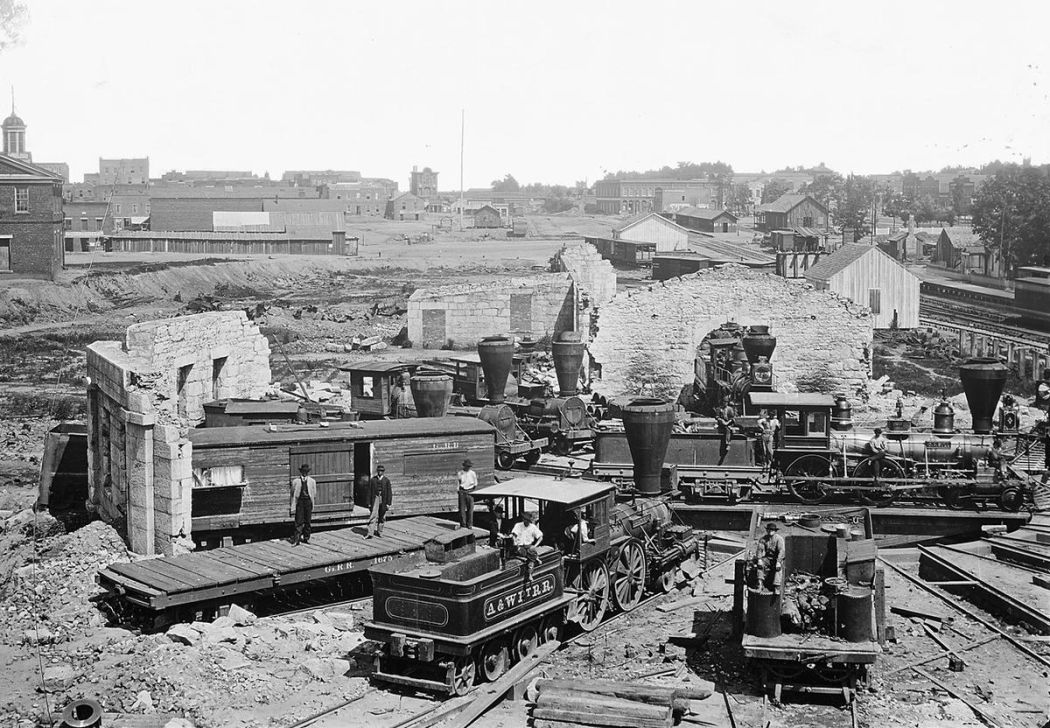
The ruins of an extensively damaged Roundhouse in Atlanta, Georgia after the Atlanta Campaign in the summer of 1864. After Union Maj. Gen. William T. Sherman captured the city, he began his destructive March to the Sea, finally taking the port of Savannah on December 21. # Mathew Brady/NARA

A view of Columbia, South Carolina, seen from the Capitol, following the occupation of the Union Army in 1865 — during which much of the city was destroyed. # Mathew Brady/NARA
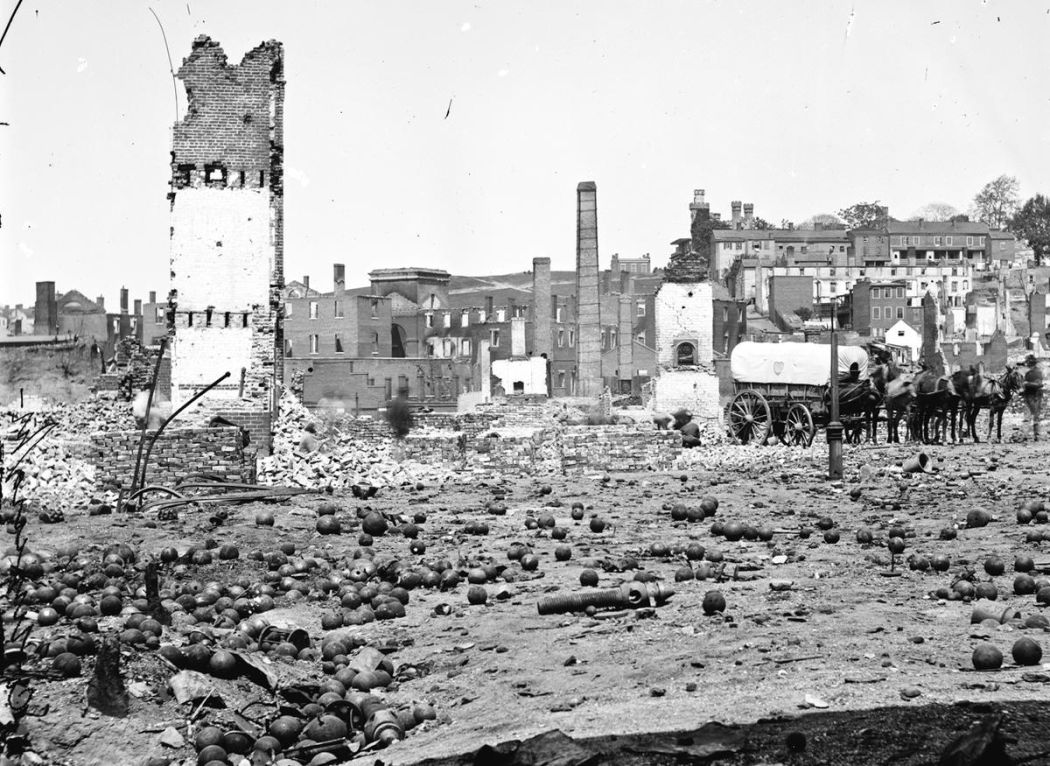
Grounds of the destroyed Arsenal with scattered shot and shell in Richmond, Virginia, in 1865. # LOC

Residents walk through the ruins of Richmond, Virginia, in April of 1865. Richmond served as the capital of the Confederate States of America during the majority of the Civil War. After a long siege in 1865, with General Ulysses S. Grant’s Union troops about to take the city, Confederate troops were ordered to evacuate, destroying bridges and burning supplies they they could not carry. A massive fire swept through Richmond, destroying large parts of the city. About one week after the evacuation of Richmond, Gen. Robert E. Lee surrendered to Grant in near Appomattox, Virginia, on April 9, 1865. # Alexander Gardner/LOC
via The Atlantic



